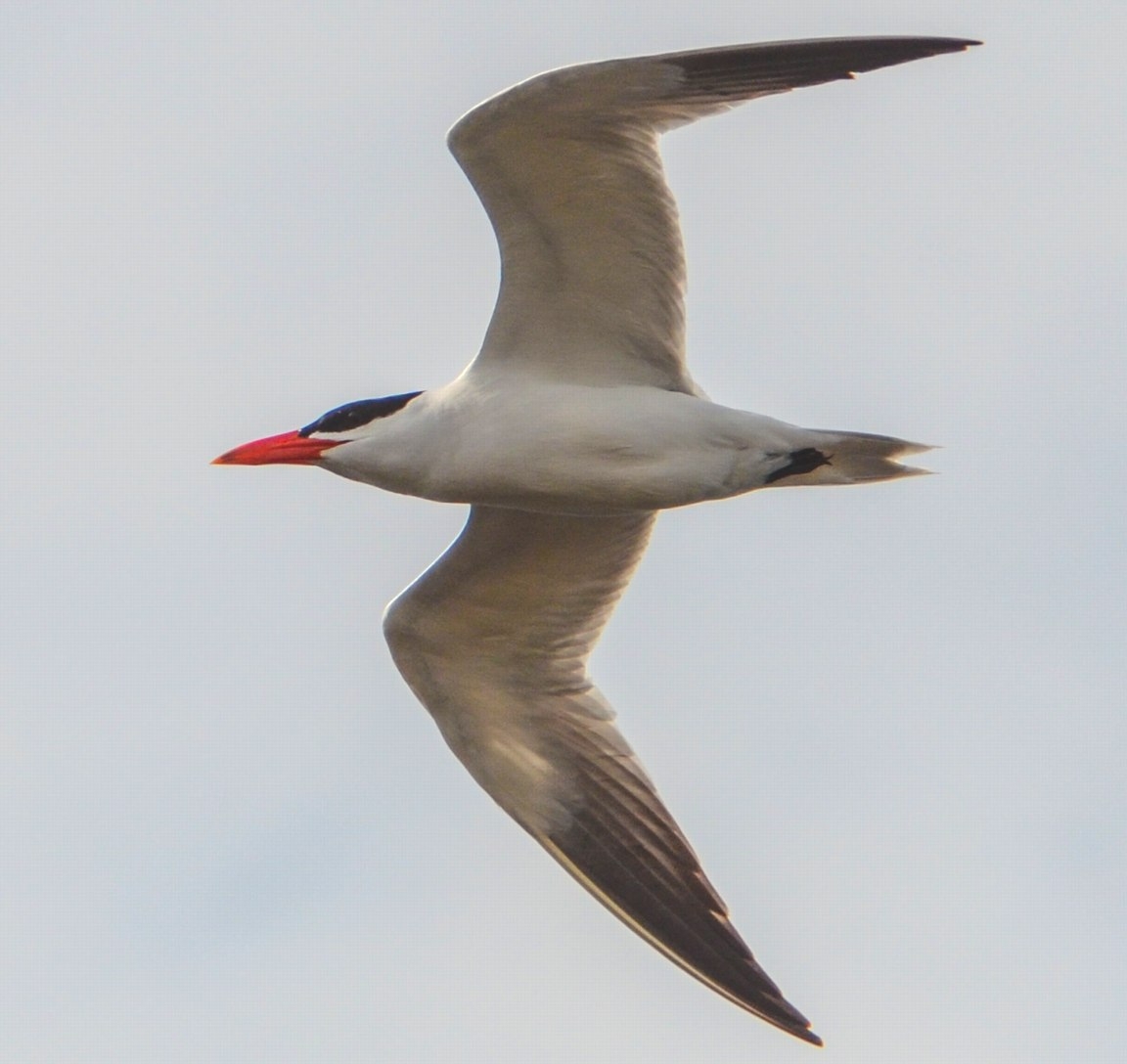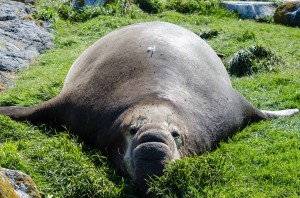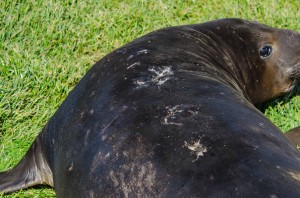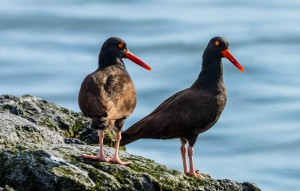
Mike Robinson, the Lester Pearson College Ecoguardian at Race Rocks Ecological Reserve, reported in the Race Rocks log on Caspian Terns and provided this picture.
This is the first image taken of this species at Race Rocks June 10, 2012.
Mike commented :” I have noticed several (2-6) Caspian Terns (Hydroprogne caspia) in the area for a month or so. They have proven very challenging to photograph but I got a couple good shots this afternoon. It is the world’s largest tern with a length of 48–56 cm, a wingspan of 127–140 cm. The global population is about 50,000 pairs. They have a distinguishing croak that sounds a bit like a Great Blue Heron.”
Domain: Eukarya
Kingdom: Animalia
Phylum: Chordata
Subphylum: Vertebrata
Class: Aves
Order: Charadriiformes
Family: Sternidae
Genus: Hydroprogne
Species: caspia (Pallus, 1770)
Common Name: Caspian Tern
Global Status: G5 (Nov 1996)
Provincial Status: S3B (Nov 2011)
BC List: Blue
COSEWIC Status: Not at Risk (May 1999)
SARA Schedule:
General Status Canada: 3 – Sensitive (2005)
Migratory Bird Convention Act: Y
Return to the Race Rocks taxonomy and image gallery
This file is provided as part of a collaborative effort by the students, faculty, staff and volunteers of Lester B. Pearson College June 10,2012 -Mike Robinson



